One of the most common complaints I hear from people doing kettlebell swings is knee and lower back pain.
In this article, I will explain some of the most common reasons why the knee can hurt after doing kettlebell swings, and most importantly, what can you do about it.
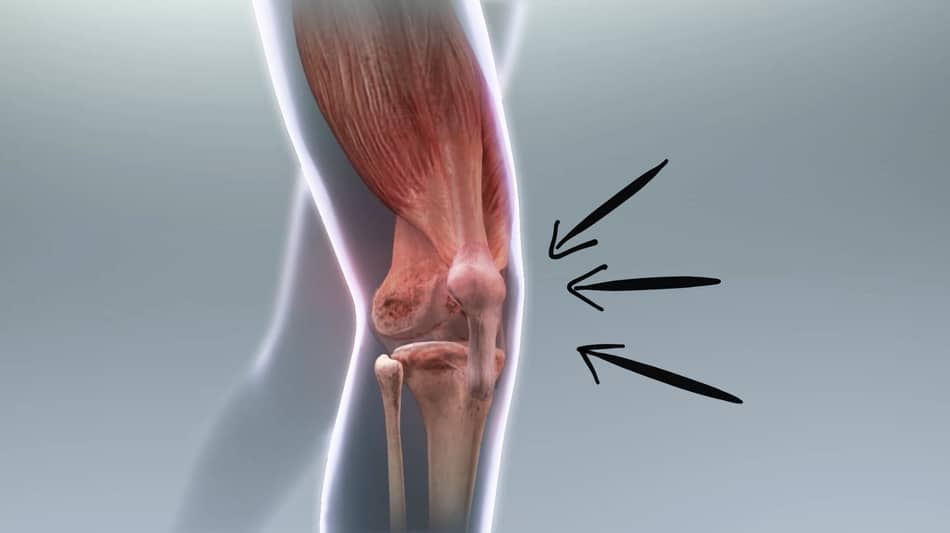
In general, the kettlebell swing can cause knee pain if it’s done incorrectly. This can happen with an insufficient range of motion, poor flexibility in your hips and hamstrings, lack of warm-up, and previous knee injury.
Here you have my overall answer, but to know more details on how to do kettlebell swings without knee pain, keep reading.
How To Do Kettlebell Swings Without Knee Pain?
As a whole, kettlebell swings can hurt your knees, especially if they’re done with a bad form.
Plus, acute knee pain during swings can also be something totally unrelated to the actual movement like a stressful time at work, bad sleep, or prolonged sitting position.
For example.
- If you haven’t slept well and your body is oversensitive to the exercise, it can cause knee discomfort.
- If you stayed seated in one position on the plane for too long or maybe drive the car for hours, it can also cause muscle tension and knee pain.
So when we combine all the other stuff together with a lack of mobility, then it doesn’t take long for something to happen.
Kettlebell swings aren’t bad for knees
I’ve been working with people who have knee problems for over 10 years. I’m not a doctor, but I studied biomechanics, so I understand anatomy well enough to know what causes the problems.
After years of seeing people complaining about their knees, usually, there is only a handful of reasons why this is happening.
Why do knees hurt after kettlebell swings?
1. Restricted range of motion
This is one of the most common reasons. If we spend a lot of the time during the day behind the car, at the desk, or in some compromised position, our muscles get stiff.
And here’s the thing – our muscles don’t just magically restore their full range of motion by doing nothing.
We need to work on it. That’s where flexibility and mobility training comes into play.
Let me show you a few golden mobility drills that will make a huge impact on your training. Do them before your workout.
Make sure you are warmed up first.
Couch stretch on the floor

- Go down to the floor and place your left knee on the floor or on the mat. Your right leg goes forward with the foot on the ground.
- You can use your right knee to hold yourself. Your left foot should be against the wall, bench, or chair.
- Once it’s there, squeeze your butt and push your hips forward. You will feel a huge stretch from the left thigh and knee. Stay there for a maximum of 2 minutes. Then switch legs.
What about if you cannot go down on the floor? Or maybe you can but it’s hard to come back up.
Don’t worry.
Standing couch stretch
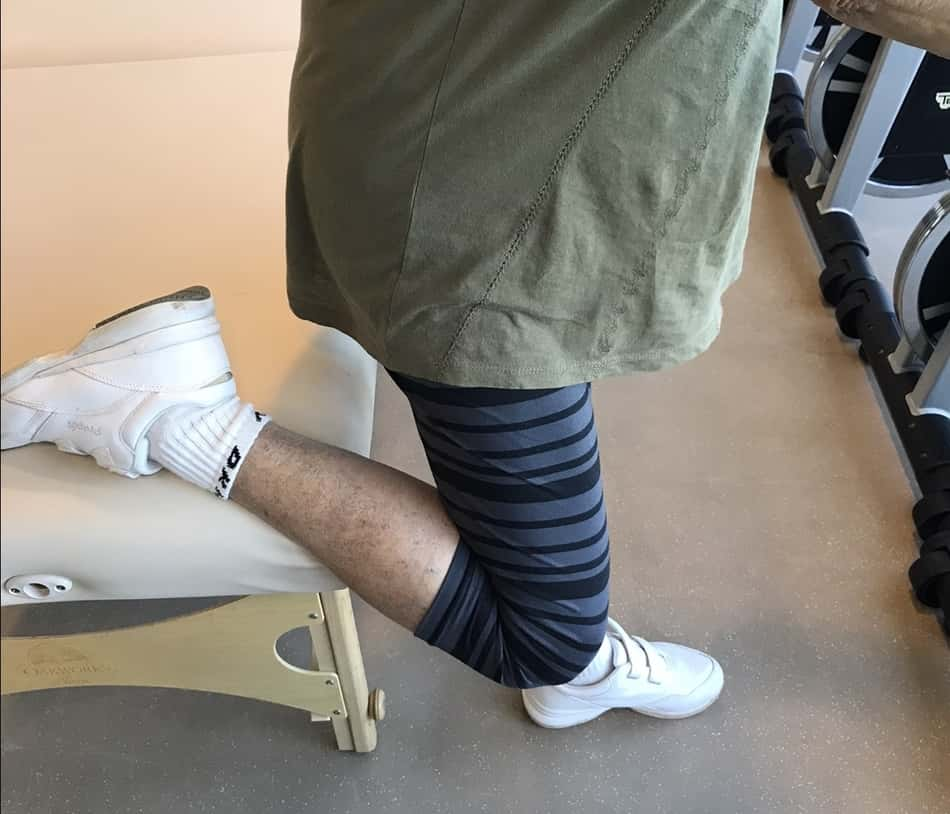
- You can still do this stretch while you stand. Just stand close to the table, or high chair.
- Ideally, you want to have something to hold on to.
- Bend one leg at a time and place your foot on the table behind you.
- Once you feel the stretch, stay the for a maximum of 2-minute.
Calf stretch
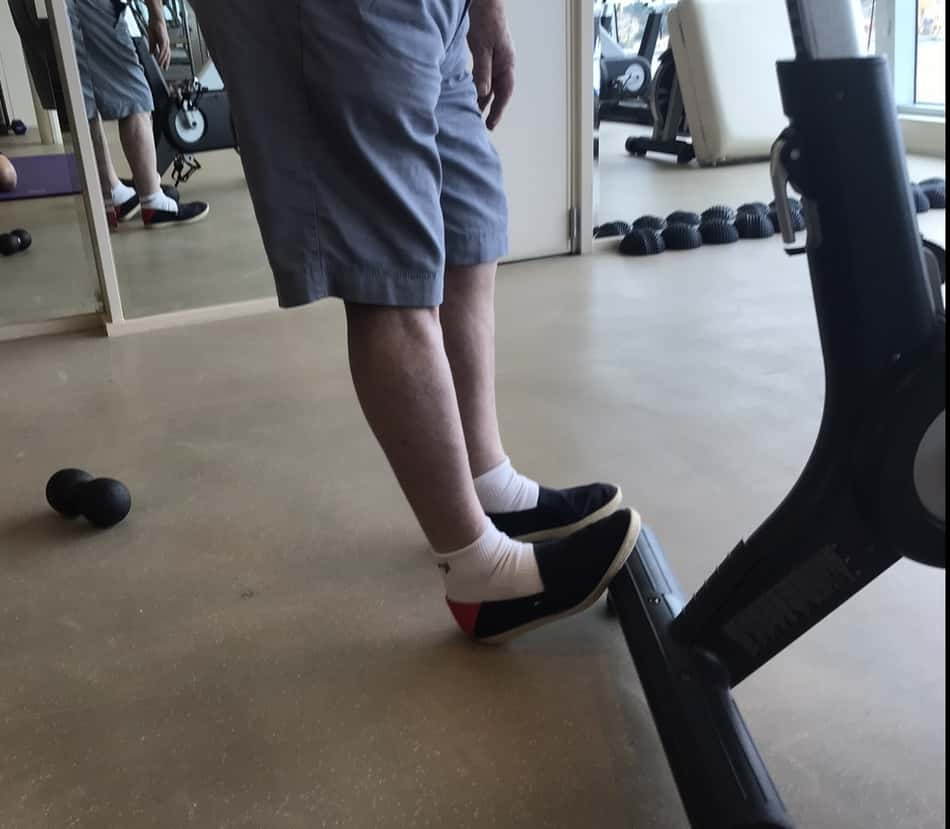
This may look like a totally unrelated stretch, but trust me, it works. Remember that our muscles work with each other.
So if your calves are brutally stiff, then it will transfer this tension upstream to your knee.
So here’s what you want to do.
- Find an object (it can be a step that is a few inches high).
- Hold to something (this can be a wall, exercise bike, or a person).
- Place your right foot on this object, and shift the weight slightly on the left leg.
- When you are ready, push your right heel to touch the ground.
- At the same time try not to lean forward. Instead, do the opposite. Squeeze your butt and thrust your hips forward.
Pigeon stretch
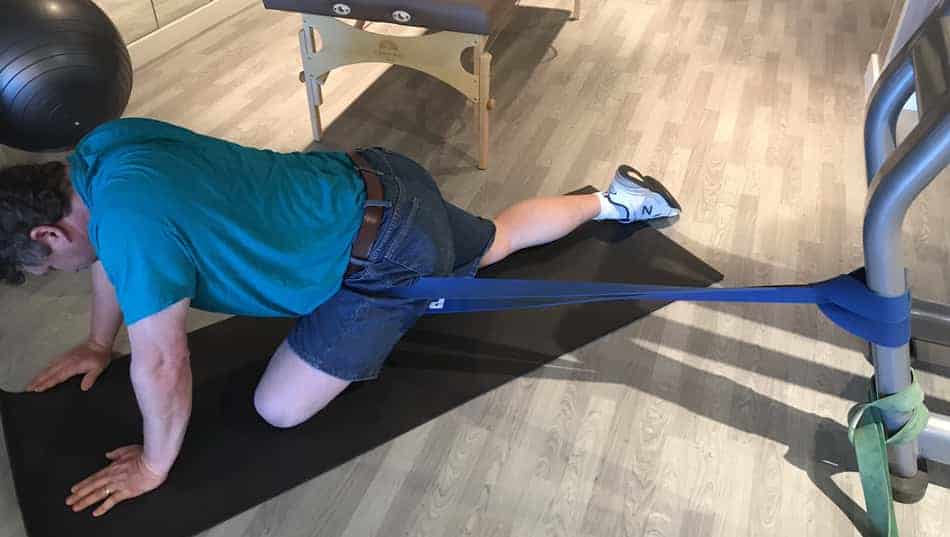
Another great mobility stretch is the pigeon stretch. It really opens up your hips and can help with your kettlebell swings.
In the picture you see my client Rick doing a pigeon stretch with the band. That can really speed up the process, but if you don’t have the band, don’t worry. Just do the stretch without.
- Go down on the floor
- If you cannot go down then use some table that is high enough to cross your leg, and crisscross the left leg to overlap the right leg.
- Stay there for a maximum of 2 minutes and change sides.
2. Incorrect kettlebell swing technique
Another common problem is doing the incorrect form.
We may have good flexibility, but then we just pick up the wrong cues and that’s how we learned to do the kettlebell swing. It happens.
So here are some ways to keep in mind.
Feet position
Below you can see the collage with three pictures.
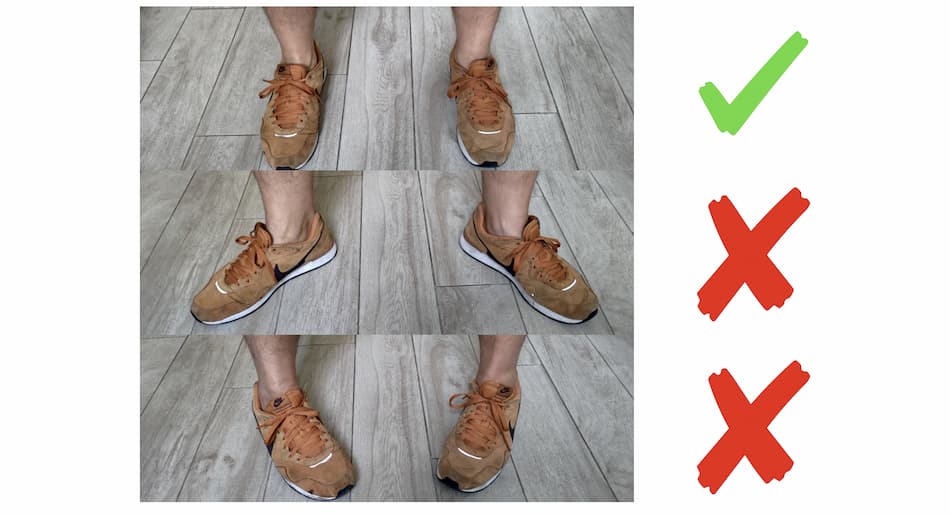
- At the top you see the correct foot position for kettlebell swings where your feet should be shoulder-width apart (this way you have plenty of space to swing and your knees face forward).
- In the middle, you see feet externally rotated. Keeping your feet in this position changes your knee biomechanics and forces them to point outside.
- On the bottom, you have feet in an internally rotated position. This points the knees inwards and can lead to limited ROM.
Knees position
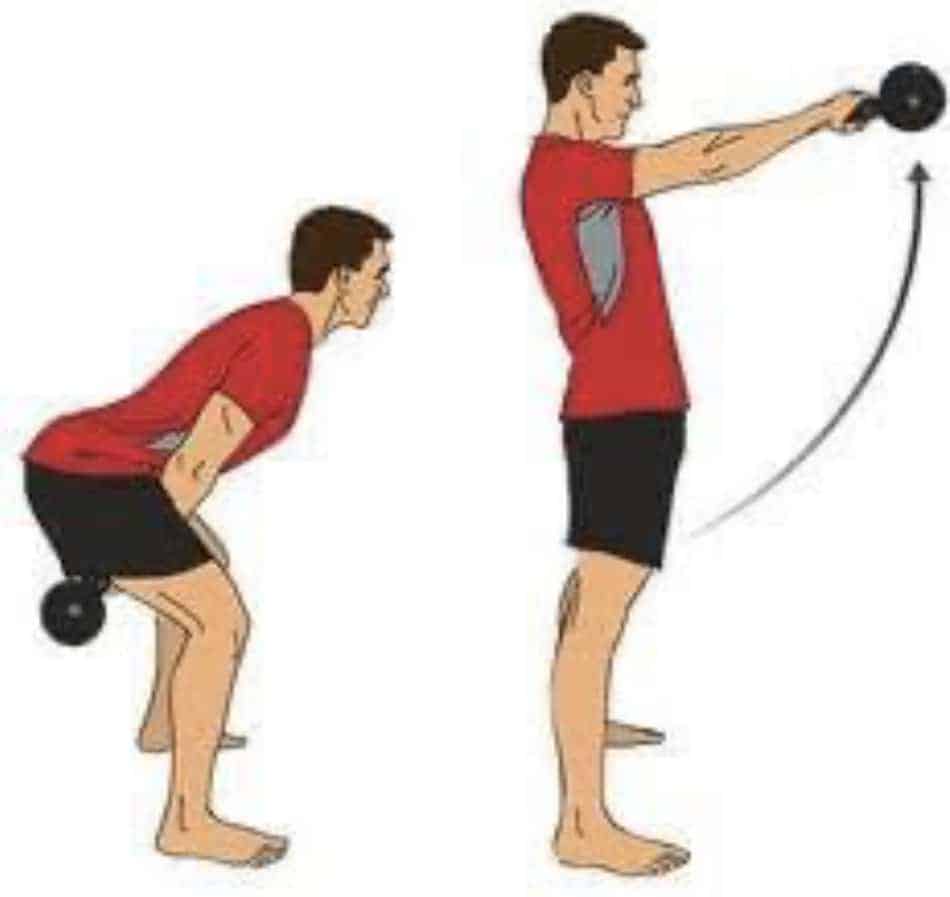
- Your knees should be facing forward. Remember that this is a hip hinge movement.
- The main work goes from your hips. So your knees are bent slightly, only when the kettlebell is at the bottom.
- Also notice that when you swing the kettlebell down, it should be above knee level. Don’t lower the weight below your knee level. This way you will maintain a straight back.
On the other hand, during the swing phase when the kettlebell is high up, you should be standing straight and squeezing your butt.
Squeezing your butt can help to reduce any back problems caused by kettlebell swings by improving your biomechanics.
My thoughts
After coaching people on correct biomechanics, I believe that one of the reasons why we develop knee pain during kettlebell swings (or any other exercise) is due to a couple of factors.
- Firstly, we are busier now than ever before (this means that we juggle our time between one or two jobs).
- We juggle early mornings and late nights, we juggle school or housework, and many other responsibilities.
- We study productivity and time management because want to get things done.
However.
- We often transfer that mindset into our training. This means we get so obsessed with performance, with moving quicker, running further, or jumping higher.
- Plus, we are also very competitive so we treat the results as either good or bad (one or zero).
For example.
- Have I got it done? (Yes or no)
- Did I do 100 swings under 3 minutes? (Yes or no)
- Did I run 10k in under one hour? (Yes or no)
I think we often take advantage of our body’s amazing ability to compensate, we don’t get immediate feedback if something went wrong.
For example.
- We can be doing exercises (incorrectly) for weeks and months, and not be aware of the problem because we don’t feel any pain at the moment.
- The movement works as a painkiller (literally).
Some studies have shown that exercise-induced analgesia can reduce the effect on chronic pain (this is been studied and investigated since the early 1970s).
Imagine that you accidentally touch a hot iron or if you bump yourself in the knee. What is your first response?
- You move out your hand, and you start to shake it randomly in random directions, or you move around, hold your hands on the knee, and maybe even jump around on one leg.
This is the unconscious response that we do it automatically. We use the movement (hand from the first example and jumping from the second) to relieve the pain.
In other words, as long as you are engaged in a movement, your body is designed not to hear the pain.
That’s why we may be doing exercises wrong, but because we are moving, we don’t register this pain immediately. That’s why many people say oh my knee/back hurt first thing in the morning.
That’s when movement signals stop.
However, once we got that out of the way, now let’s see the most common reasons why we can struggle with our knees after kettlebell swings.
Conclusion
- Kettlebell swings do not cause knee pain, as long as you perform them with the correct form and an efficient warm-up.
- For people who already experience knee pain after swings, a good alternative is a hip thrust.
This exercise is strictly targeted to work your glutes and hamstrings, and it doesn’t put any pressure on your knees. It can be done with a barbell, or with a smith machine.
It may take between 3-6 months to reduce pain, depending on the issue. If you did all the steps that I’ve outlined here, but still have constant knee discomfort, go see your doctor. This may be a bigger issue.
